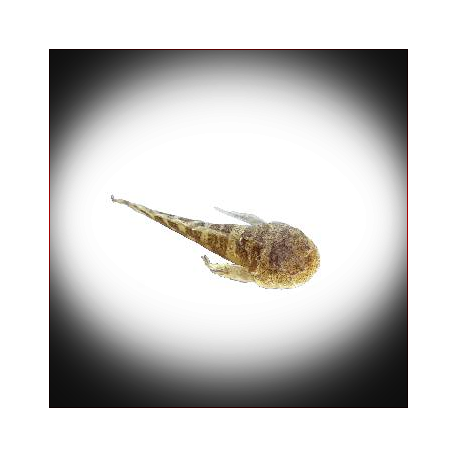More info
Datasheet
| Minimum Tank Size | 70 litres / 18.49 US gallons |
| Maximum Size | 15.0cm / 5.91inches |
| Temperature | 24°C / 75.20°F - 28°C / 82.40°F |
| Hardness | 0-15ºdH |
| pH | 6.0-7.5 |
General Description
The Prehistoric Monster Fish, Thalassophryne Amazonica, is a freshwater species belonging to the genus Thalassophryne, characterized by its cryptic coloration and predatory nature. These fish are venomous, equipped with hollow spines that connect to venom-producing glands. Although T. amazonica's venom is not highly potent, caution is advised when handling them due to their venomous nature. The species can grow up to 15.0cm in size and is primarily found in the tributaries of the Amazon in Ecuador, Peru, and Brazil.
Aquarium Setup
To successfully house Thalassophryne Amazonica, a minimum tank size of 70 liters is recommended. The setup should include a deep layer (2-3 inches/5-7.5cm) of soft sand for burrowing, with optional driftwood and live plants like Microsorium or Anubias for aesthetic appeal. Dim lighting and floating plants can provide a natural habitat, while maintaining a pH range of 6.0-7.5 and a temperature of 24-28°C is essential. Adequate aeration is beneficial, and the species tolerates varying water hardness levels.
Behaviour
Thalassophryne Amazonica is a solitary predator that should ideally be housed alone in a tank, as it tends to consume smaller tankmates. Larger species may outcompete it for food, though conspecifics can be kept in pairs or small groups in adequately sized tanks. Their feeding behavior is remarkable, as they ambush prey from the substrate with lightning-fast strikes, making feeding a captivating sight for enthusiasts.
Feeding and Diet
Known as an obligate piscivore, T. amazonica requires a constant supply of live fish for sustenance. While some sources suggest river shrimp as an alternative, the species typically only accepts live fish as food. Establishing a secondary tank with easily bred cichlids like the convict, Amatitlania nigrofasciata, can provide a sustainable food source as the fry of these cichlids serve as ideal prey for the predatory T. amazonica.
Reproduction & Dimorphism
Successful reproduction of Thalassophryne Amazonica in captivity remains rare, with documented cases of egg laying but no reports of successful fry development. Female individuals are notably larger than males in adulthood. The species displays minimal spawning activity, with eggs being laid in sandy substrates over several days, exhibiting adaptations to facilitate egg adhesion in flowing waters typical of their natural habitat.
Habitat and Distribution
Native to freshwater environments, T. amazonica is primarily found in the Amazon tributaries of Ecuador, Peru, and Brazil. They prefer sandy river bottoms and exhibit burrowing behavior in their natural habitat. Museum collections have documented specimens from various rivers, including the Rio Conambo, Rio Shiona, Rio Ataya, and Rio Corriantes in South America.

